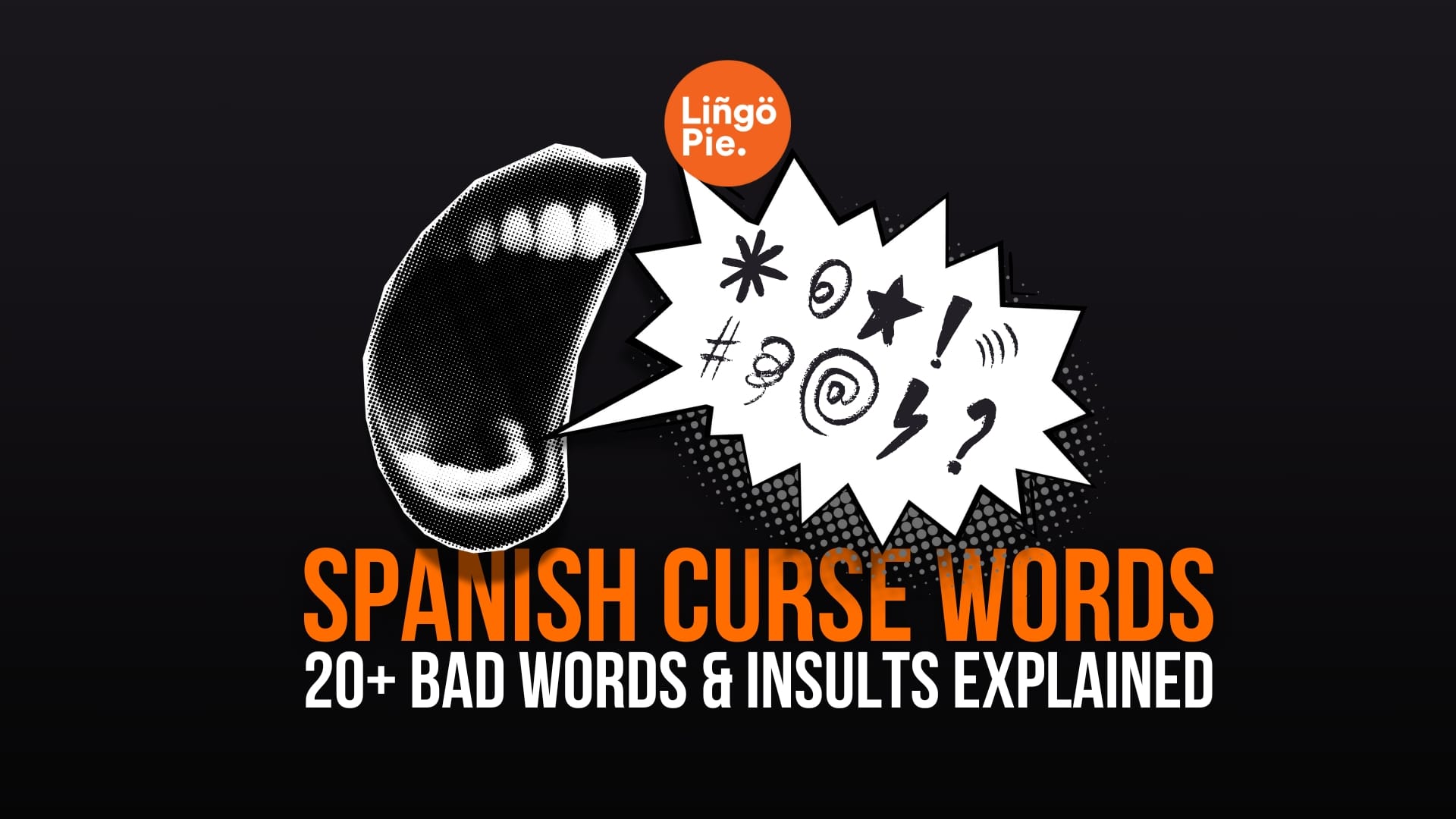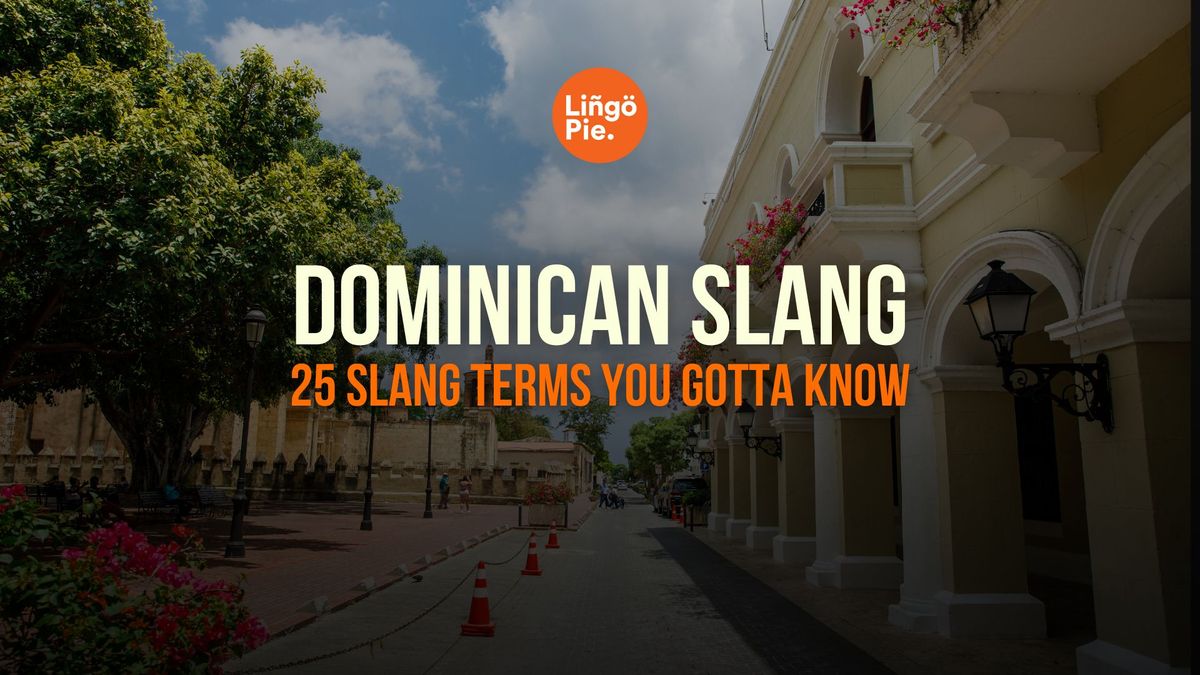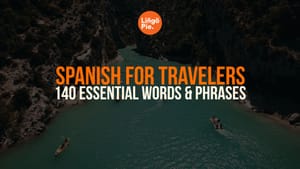You're melting in 42-degree heat in Seville when a local walks by and mutters "¡Qué bochorno!" You know calor means heat, but what’s bochorno? Why does everyone disappear between 2 and 5 pm? And how do you ask for directions to the nearest helado shop without sounding like a tourist reading from a phrasebook?
The truth is that a quick English to Spanish cheat sheet won’t get you far. Real Spanish speakers have varied words for different types of heat, know exactly which beaches have the best chiringuitos, and can navigate summer festival schedules that would confuse most foreigners.
If you want to make yourself understood at the beach, order delicious summer drinks by the pool, and understand important signs, then this brief guide to Spanish summer words is a travel must-have! Our advice? Read this first before you actually book a trip!
- Are You A Gabacho, Gringo, Or Güero? [Spanish Guide]
- 15 Traditional Spanish Food And How To Order Them
- 4 Seasons In Spanish: A Vocab Guide For Beginners

Basic summer vocabulary in Spanish
If you're seriously invested in visiting Spain, then do note that the heat can get pretty serious. For instance, Córdoba regularly hits 47°C. Madrid turns into an oven. Coastal cities get so humid that your clothes stick to your skin within minutes of leaving air conditioning.
The Spanish word "Bochorno" captures that special misery of humid heat that makes everyone cranky. When someone says "hay mucho bochorno," they're describing weather that makes you want to hide indoors until sunset. It explains why some Spanish cities shut down during afternoon hours and why everyone talks about escaping to the coast.
| Spanish | English | Pronunciation |
|---|---|---|
| hace calor | it's hot | AH-seh kah-LOHR |
| hace sol | it's sunny | AH-seh sol |
| está despejado | it's clear | es-TAH des-peh-HAH-do |
| la temperatura | temperature | lah tem-peh-rah-TOO-rah |
| los grados | degrees | lohs GRAH-dohs |
| el bochorno | muggy heat | el bo-CHOHR-no |
| la brisa | breeze | lah BREE-sah |
| el verano | summer | veh-RAH-no |
| las vacaciones | vacation/holidays | lah vah-kah-see-OH-nehs |
Beach vocabulary in Spanish
If you plan to enjoy Spanish waters, you must visit Playa de la Concha. This popular beach, located in San Sebastián, curves around a perfect bay like a shell (concha). The water stays cool even in summer, making it one of Europe's most beautiful city beaches. Locals swim here year-round, and the promenade fills with families every evening.
Another must-visit is the Playa de Bolonia in Cádiz. It’s one of those only beaches in the world where you’ll enjoy stretches for miles with Roman ruins as a backdrop. The wind in this spot also creates massive sand dunes and attracts kitesurfers.
Chiringuitos are the social centers of Spanish beach culture. Families claim tables for entire afternoons, order fresh grilled fish, and let kids run around safely. A good chiringuito has shade, cold beer, and paella cooked over wood fires right on the sand.
| Spanish | English | Pronunciation |
|---|---|---|
| la playa | beach | lah PLAH-yah |
| la arena | sand | lah ah-REH-nah |
| el mar | sea | el mar |
| las olas | waves | lahs OH-lahs |
| la marea | tide | lah mah-REH-ah |
| el chiringuito | beach bar | el chee-reen-GEE-to |
| la orilla | shore/edge | lah oh-REE-yah |
| la costa | coast | lah KOHS-tah |

Water activities and swimming in Spanish
Spanish coasts offer everything from gentle family swimming to serious surfing. San Sebastián's Playa de Zurriola has surf schools for beginners. The Costa Brava hides dozens of small coves perfect for snorkeling. The Canary Islands provide year-round swimming in subtropical water.
Bañarse means cooling off in water during hot weather. Spanish beach culture brings multiple generations together - grandparents, parents, and kids all enjoying the sea as a family activity.
| Spanish | English | Pronunciation |
|---|---|---|
| nadar | to swim | nah-DAHR |
| bañarse | to go swimming/bathe | bah-NYAHR-seh |
| bucear | to dive/snorkel | boo-seh-AHR |
| hacer surf | to surf | ah-SEHR surf |
| flotar | to float | flo-TAHR |
| el salvavidas | lifeguard | el sal-vah-VEE-dahs |
| la tabla de surf | surfboard | lah TAH-blah deh surf |
Beach gear in Spanish
The Mediterranean sun burns skin in minutes. Protector solar isn't optional when UV levels hit dangerous highs. Chanclas protect feet from sand hot enough to cause burns. Sombrillas provide life-saving shade when temperatures soar.
Spanish families arrive at beaches by 10 AM to claim shaded spots before the heat becomes unbearable. Smart beachgoers pack neveras (coolers) with ice-cold drinks and head home during peak sun hours.
| Spanish | English | Pronunciation |
|---|---|---|
| la toalla | towel | lah to-AH-yah |
| el protector solar | sunscreen | el pro-tek-TOHR so-LAHR |
| las gafas de sol | sunglasses | lahs GAH-fahs deh sol |
| las chanclas | flip-flops | lahs CHAN-klahs |
| el bañador | swimsuit | el bah-nyah-DOHR |
| la sombrilla | beach umbrella | lah som-BREE-yah |
| la nevera portátil | cooler | lah neh-VEH-rah por-TAH-teel |
| la pelota de playa | beach ball | lah peh-LOH-tah deh PLAH-yah |

Spanish Food that cools you down
Spanish summer menus change completely when temperatures climb. Gazpacho appears everywhere - this cold tomato soup actually cools your body temperature. Helado shops stay open until midnight because ice cream becomes a necessity, not a treat.
Horchata de chufa from Valencia tastes like liquid heaven when you're overheating. This tiger nut drink is served ice-cold and has been cooling down Valencians for centuries. Granizado de limón (lemon slush) is available at every bar and chiringuito.
Watermelon and melon are cheap, hydrating, and available at every market. Smart locals eat light, cold meals and save heavy cooking for cooler evening hours.
| Spanish | English | Pronunciation |
|---|---|---|
| el helado | ice cream | el eh-LAH-do |
| el gazpacho | cold tomato soup | el gahs-PAH-cho |
| la sandía | watermelon | lah san-DEE-ah |
| el melón | melon | el meh-LOHN |
| la horchata | tiger nut drink | lah or-CHAH-tah |
| el granizado | slush/snow cone | el grah-nee-SAH-do |
| las tapas | small plates | lahs TAH-pahs |
| la cerveza fría | cold beer | lah ser-VEH-sah FREE-ah |
Whether you are sunning yourself at the beach, lounging by the pool, or enjoying a Spanish city break, you will want to be able to ask for snacks and drinks to keep you going in the heat.
Simple phrases to learn and words to look out for on a menu include:
- Los aperitivos y bebidas - Light food and drinks
- Las aceitunas - Olives
- Patatas fritas - Fries
- Frutos secos - Nuts/ seeds/ dried fruits
- Agua - water
- Cerveza - Beer
- Vino blanco - White wine
- Vino tinto - Red wine
- Tinto de verano - Red wine with lemon soda or soda water
A tinto de verano is a classic Spanish summer drink. The name is made up of the words for red wine (vino tinto) and the summer (el verano).
It is similar to sangría, but without the fruits, sugar, and other liqueurs. Tinto de verano is your lighter, less alcoholic, and more refreshing choice for a hot Spanish afternoon.
While you are visiting one of Spain's many famous coastal towns, you should sink your teeth into some of the seafood.
- Marisco - Seafood
- Pescaíto frito - Fried anchovies/ sardines or similar
- Mejillones - Mussels
- Ensalada de cangrejo - Crab salad
- El cangrejo - Crab (food and animal)
Remember, in English, we say "fish" for both the animal and the food. However, in Spanish, there is a distinction.
The Spanish word "pez" refers to a living fish swimming in the ocean. You catch a "pez" (fish) by fishing ("pescar"), and once caught, it is "pescado" (past participle of the verb "to fish").
So, the Spanish word "pescado" refers to the cooked fish on your plate.

Spanish summer festivals
During summer, La Tomatina in Buñol turns the town into a giant tomato fight every August. Twenty thousand people pelt each other with overripe tomatoes until the streets run red. You need tickets in advance.
The Las Fallas in Valencia burns massive paper sculptures in spectacular fires every March. Artists spend months creating detailed figures that get destroyed in one night of flames and fireworks.
And let's not forget the San Fermín in Pamplona! This event brings the famous running of the bulls every July. The actual bull runs last only minutes each morning, but the festival continues for a week with non-stop parties.
Lastly, the Feria de Abril in Seville showcases Andalusian culture with flamenco dancing, horse parades, and sherry drinking in decorated casetas (booths) that stay open all night.
| Spanish | English | Pronunciation |
|---|---|---|
| el festival | festival | el fes-tee-VAHL |
| la terraza | terrace/outdoor seating | lah teh-RRAH-sah |
| tomar el sol | to sunbathe | to-MAHR el sol |
| dar un paseo | to take a walk | dahr oon pah-SEH-oh |
| hacer barbacoa | to barbecue | ah-SEHR bar-bah-KOH-ah |
| las fiestas | parties/celebrations | lahs fee-EHS-tahs |
| el mercadillo | outdoor market | el mer-kah-DEE-yoh |
How Spanish summer days really work
Between 2 and 5 PM, smart people stay indoors with shutters closed and air conditioning running. Shops close, streets empty, and cities become ghost towns.Life resumes in the evening when temperatures drop. Dinner happens after 9 PM. Families with young children walk around plazas at 11 PM. Summer nights stretch into la madrugada (early morning hours) during festivals and weekends.
| Spanish | English | Pronunciation |
|---|---|---|
| la siesta | afternoon nap | lah see-EHS-tah |
| el mediodía | noon/midday | el meh-dee-oh-DEE-ah |
| el atardecer | sunset | el ah-tar-deh-SEHR |
| la madrugada | early morning | lah mah-droo-GAH-dah |
| por la mañana | in the morning | por lah mah-NYAH-nah |
| por la noche | at night | por lah NOH-cheh |

Spanish summer clothing
Spanish summer fashion prioritizes survival over style, though locals somehow manage both. Ropa ligera becomes uniform - cotton, linen, anything that breathes. Synthetic fabrics turn into personal saunas.
A good sombrero protects your head from sun that can cause heatstroke. Sandalias replace closed shoes for most activities. Even business dress codes relax when temperatures hit the high 30s. Dark colors become enemies that absorb heat and make walking outside miserable.
| Spanish | English | Pronunciation |
|---|---|---|
| la ropa ligera | light clothing | lah ROH-pah lee-HEH-rah |
| el sombrero | hat | el som-BREH-ro |
| la camiseta | t-shirt | lah kah-mee-SEH-tah |
| los pantalones cortos | shorts | lohs pan-tah-LOH-nehs KOHR-tohs |
| el vestido | dress | el ves-TEE-do |
| las sandalias | sandals | lahs san-DAH-lee-ahs |
Spanish phrases for summer
These expressions help you survive conversations about heat, make beach plans, and complain like a local when temperatures become unbearable.
| Spanish | English | Context |
|---|---|---|
| ¡Qué calor hace! | How hot it is! | Expressing shock at temperature |
| No aguanto este calor | I can't stand this heat | Complaining about weather |
| Vamos a refrescarnos | Let's cool down | Suggesting escape from heat |
| ¿Vienes a la playa? | Are you coming to the beach? | Making beach plans |
| El sol está muy fuerte | The sun is very strong | Warning about dangerous UV |
| Necesito una sombra | I need some shade | Seeking sun protection |
| ¡Qué fresco está el agua! | How refreshing the water is! | Enjoying cool water |
| Vamos al chiringuito | Let's go to the beach bar | Suggesting food and drinks |
Danger signs in Spanish
Finally, to ensure you have a fun-filled, safe, and happy trip so your Spanish-speaking country of choice, here are some practical phrases to note down.
If you see a danger sign, or a señal de peligro, you must know what it says.
- (No) es seguro nadar aquí - It is (not) safe to swim here
If you are ever unsure, you can ask ¿puedo nadar aquí?, meaning "can I swim here?"
- Las olas - The waves
- Cuidado - Careful
- Peligro/ Peligroso - Danger/ dangerous
- Salvavidas - Lifeguards
- La mareada alta/ baja - High/ low tide
Learn Spanish This Summer
If you want these words to stick, stop memorizing them. Hear them. See them. Use them. That’s where Lingopie wins. You watch real Spanish, click the words as they come up, and they’re yours.
Remember, nobody learns bochorno or vamos al chiringuito from a list. They learn it when a character complains about the heat or orders the next round at the bar.
You want that kind of Spanish? Open Lingopie. Hit play. Start sounding like someone who’s lived through a Spanish summer.


![50+ Easy Spanish Summer Words For Beginners [Guide]](/blog/content/images/size/w1200/2025/06/Spanish-Summer-Words.jpg)





![Why Memorizing Spanish Words Won’t Make You Fluent [Tips]](/blog/content/images/size/w300/2025/06/how-to-practice-spanish-vocabulary.jpg)
![14 Spanish Filler Words To Sound Like A Native [Guide]](/blog/content/images/size/w300/2025/06/Spanish-Filler-Words.jpg)
